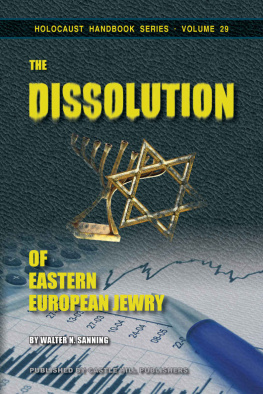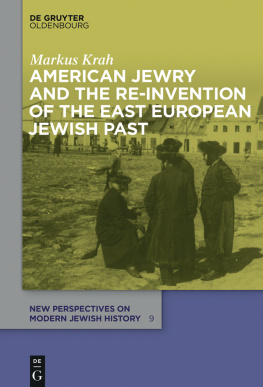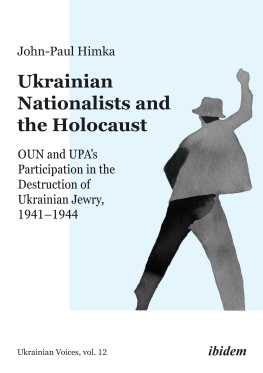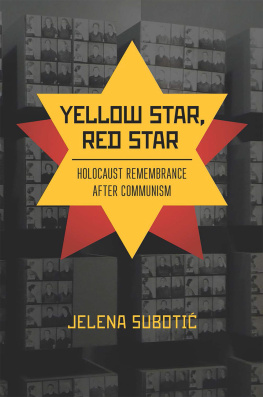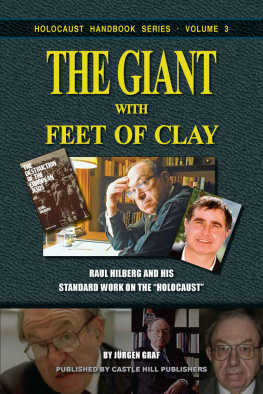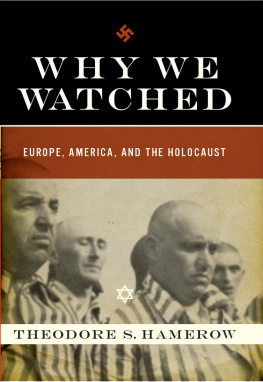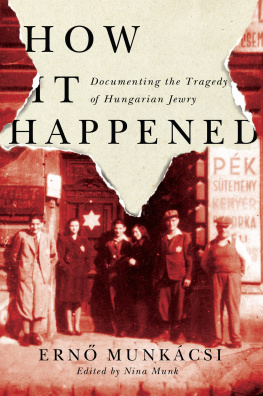Walter N. Sanning: The Dissolution of Eastern European Jewry
With a foreword by Dr. Arthur R. Butz and an epilogue by Germar Rudolf
This edition is issued by arrangement with, and is authorized by, the Institute for Historical Review.
for the English translation of Sannings text: Institute for Historical Review; for the epilogue: Germar Rudolf
Cover Illustration: Eastern European Jewry, symbolized by the Star of David and the Menorah, dissolves between the combined onslaught of National Socialism from the West and Soviet Communism from the East.
[] it is questionable whether one should accept improbable figures supplied by a not overly friendly source.
American Jewish Year Book , 1972, Vol. 73, p. 536, on the Soviet Union being engaged in making Soviet Jews disappear statistically
Foreword
It is an understatement to say that the study of 20th century Jewish population changes presents us with irresolvable problems, but there is much that can be reliably observed. The principal background developments were the rise of Zionism as a significant international political force and the rise of anti-Jewish movements in Europe, notably in Germany. Implicit in both developments were policies, however differently motivated, that would have relocated European Jews in great numbers. Indeed this common objective was the basis for a not negligible amount of cooperation between Zionist and German authorities in the 1933-1939 period.
Other background developments were the adoption of pro-Jewish policies by the USA and the USSR, the latter maintaining those policies through 1948 (the year of Israels establishment). These victors in World War II continued, also from various motivations, processes of relocating Jews that had been carried on by Germany, while Germany in turn had not been the first in the field, as large relocations of Jews had been carried out earlier under Zionist and Soviet auspices.
As these massive movements subsided to trickles in the postwar period, the broad outlines of what had happened were clear. Jewish communities had drastically shrunk or even virtually disappeared in much of central and eastern Europe, particularly Poland. Correspondingly, there had been great transfers of Jews to Palestine, the USA and other countries, employing means provided by Jewish organizations or by the U.S.-controlled UNRRA, whose Directors had been New York Zionists Herbert Lehman and Fiorello LaGuardia. There had also been a large dispersion of Jews, especially Polish Jews, into the Soviet Union. Thus the excellent title of this book.
While such broad outlines were clear, many details remain obscure, shrouded or inaccessible. Particularly troublesome are quantitative aspects. We do not know how many were absorbed into the Soviet Union, how many emigrated to the USA or other specific countries, or how many remained or resumed living in central or eastern Europe, and the not insignificant number of those who perished has not been firmly reckoned. On the last matter, only propagandists and uninformed people come forward with a purportedly accurate number.
Reasons for this ignorance are not difficult to give. The movements of Jews through the UNRRA camps were camouflaged as much as was possible under the circumstances, for the excellent reasons, among others, that the subsequent movements to Palestine were illegal and in any case UNRRA was supposed to be for United Nations Relief and Rehabilitation in a war ravaged continent, not for conquest of non-European territory by indigenous European populations.
Useful data on postwar migration and resettlement is difficult to impossible to obtain. Since 1943 the U.S. Immigration and Naturalization Service has made no attempt to count immigrant Jews as such, and Soviet-dominated eastern Europe does not welcome foreign or scholarly curiosity on politically sensitive matters.
Census data is not of much help. In the USA, which is today the leading center of Jewish population, Jews are not a category for census purposes, and indeed Jews do not like being counted. The ongoing controversy in Britain on this point is a current illustration of this aversion.
To these considerations should be added the difficulty of producing an operationally useful definition of a Jew. This is an especially grave problem in western liberal democracies, on account of the large extent of intermarriage and the larger extent of religious apostasy.
This book jumps squarely into the uninviting waters of 20th century Jewish demography and migration and attempts to reconstruct these Jewish population changes, especially in their quantitative aspects. One immediate consequence of this choice of subject is that the person looking for light reading is advised to look elsewhere; this book is difficult to read even for somebody who is accustomed, as I am, to reading texts with high quantitative components. Another consequence is that the reader looking for final and definitive answers to how many? type questions, as distinct from at best provisional estimates, will be disappointed. There is scarcely an estimate arrived at in this book that cannot be challenged on some plausible grounds.
Such limitations of this book are not the authors fault. There is no way his subject can be served adequately with easily readable text, and there is no way to determine the more important numbers involved with the accuracy and reliability of, say, a total population census in a contemporary western country. The author is well aware of such constraints and limitations, and specifically cautions the reader that one vitally important estimate has no claim on absolute certainty. If I were to select only one respect in which I wish the author had done something differently, it would be that I wish he had been more emphatic on the rather tentative nature of most of the quantitative conclusions reached here.
Such negative features of this book having been conceded at the outset, what are the positive features that excited my admiration for this work when it was in manuscript, and caused me to strongly urge its publication?
This book is the first full-length serious study of World-War-II-related Jewish population changes. Its esoteric air is perhaps, on the perceptual level, the perfect antidote to the vulgar idiocies that are today monotonously peddled by the media, for whom recent Jewish population changes are also of major interest, although such dry terminology is rarely employed by them.
This book presents the fundamentally correct account of the subject. While the basic structure of that account is not original with this book, the scope and depth of the study are great enough that I daresay that, barring the miraculous release of hitherto confidential data especially by Zionist and Soviet controlled sources the treatment has been carried here about as far as it can be.
While the complexity of the subject may disturb some, it is important to learn, as we do from this book better than from any other, why this complexity exists. While many of the numerical estimates are not conclusive, it is important to learn, as we do from this study better than from any other by examining its sources, that such estimates can be made by conscientious deduction from widely accepted, accurately cited and, on very important points, mostly Jewish literature.

